- Home
- Неизвестный
Caffeine Blues_ Wake Up to the Hidden Dangers of America's #1 Drug ( PDFDrive )
Caffeine Blues_ Wake Up to the Hidden Dangers of America's #1 Drug ( PDFDrive ) Read online
PUBLISHER’S NOTE: This book is not intended as a substitute for medical advice of physicians. The reader should regularly consult a physician in all matters relating to his or her health, particularly in respect of any symptoms that may require diagnosis or medical attention.
Copyright © 1998 by Stephen Cherniske, M.S.
All rights reserved. Except as permitted under the U.S. Copyright Act of 1976, no part of this publication may be reproduced, distributed, or transmitted in any form or by any means, or stored in a database or retrieval system, without the prior written permission of the publisher.
Warner Books
Hachette Book Group
237 Park Avenue
New York, NY 10017
Visit our Web site at www.HachetteBookGroup.com.
First eBook Edition: December 1998
The Warner Books name and logo are registered trademarks of Warner Books.
ISBN: 978-0-446-55111-3
Contents
ACKNOWLEDGMENTS
FOREWORD
INTRODUCTION
CHAPTER 1: Coffee and Caffeine: A Dose of Reality
CHAPTER 2: Are You Addicited?
CHAPTER 3: Caffeine and Your Body
CHAPTER 4: Caffeine and Your Mind
CHAPTER 5: Specific Health Disorders: The Caffeine Connection CHAPTER 6: Caffeine and Women’s Health
CHAPTER 7: Politics and Pushers
CHAPTER 8: The Hard Truth about Soft Drinks
CHAPTER 9: Options and Alternatives
CHAPTER 10: Off the Bean and On to Vitality Off the Bean Conclusion
APPENDIX A
APPENDIX B
APPENDIX C
NOTES
DON’T LET YOUR MORNING PICK-ME-UP TEAR YOU
DOWN
• Caffeine can’t provide energy, only chemical stimulation, an induced emergency state that can lead to irritability, mood swings, and panic attacks.
• Caffeine’s ultimate mood effect can be letdown, which can lead to depression and chronic fatigue.
• Caffeine gives the illusion of heightened alertness by dilating pupils, quickening heart rate, and raising blood pressure. In fact, caffeine does not increase overall mental activity.
LET CAFFEINE BLUES BRING YOU BETTER HEALTH
For the children, who need to be nourished and protected.
ACKNOWLEDGMENTS
I would like to acknowledge my mother for her commitment to health and good nutrition more than fifty years ago, and all of the teachers, researchers, and scientists who over the years instilled in me a love of scientific inquiry.
Particularly, I would like to thank Robert Garvin and Allan Watts for showing me that truth is most often found by looking beyond the conventional viewpoint.
I have also benefited tremendously from many scientists who paved the way.
Jack E. James and Keryn Stirling produced a valuable analysis of the harmful effects of habitual caffeine use in 1982. Annette MacKay Rossignol and Linda Massey conducted groundbreaking research concerning caffeine and women’s health. Roland R. Griffiths was an early researcher into caffeine’s addictive properties, and Dr. Richard M. Gilbert published Caffeine as a Drug of Abuse in 1976, long before anyone else caught on. Thanks to Dr. Eric Strain and his colleagues who finally proved the existence of a caffeine dependence syndrome.
Thanks also to G. Alan Smith for showing the world that caffeine reduction is a critical step in the treatment of anxiety, headache, sleep disturbance, and abdominal symptoms, and to Dr. Milton Krisiloff for illuminating the caffeine connection to urinary and prostate problems. I am grateful for the inclusion of material concerning caffeine abuse from the clinical experience of Drs. Michael Liepman and Jesse Hanley, and for perspectives gained from the work of Drs.
Michael Murray, Dean Ornish, Jeffrey Bland, and Ralph Golan.
In the process of creating this book and program, I was assisted greatly by Caroline MacDougall, a pioneer in the creation of caffeine-free beverages. Her insight, wordsmithing, inspiration, tireless support, and criticism were essential to the project. The editorial and writing assistance of Cynthia Anderson was once again crucial and greatly appreciated. Special thanks to Cindy Latham, Wendy McClure, Robert Gangwer, and research assistants Grace Molonai, Catherine Rhodes, and Elliott MacDougall.
I am grateful for research provided by the Natural Resources Defense Council, the Smithsonian Migratory Bird Center, and for the remarkable work of
Council, the Smithsonian Migratory Bird Center, and for the remarkable work of Marcus Colchester and Larry Lohmann exploring the issues of human rights and rain forest destruction.
Warmest gratitude to Robert Stricker, my literary agent, who found the very best home for this manuscript. To Warner Books for having the courage to take a stand at this critical point in time. To Vice President and Hardcover Publisher Jamie Raab, John Aherne, editor, and Heather Kilpatrick, deputy general counsel.
Thanks also to B. William Lee, H. Y. Sung, Stuart Ochiltree, and the staff of Univera Pharmaceuticals for resources, time, encouragement, and the ability to create solutions where others see only problems.
And finally, I am indebted to my wife, Deborah, for holding the family together while Daddy worked late; for her unending support on every level and her many contributions from concept to final draft.
FOREWORD
As a physician, I prescribe drugs with great care, because all drugs have effects and side effects. In addition, some can create a state of dependence. Clearly, caffeine is such a drug, and I find that very few people are aware of its side effects and dangers. In fact, most people do not even know how much caffeine they are consuming, and what concerns me is that this information is purposely withheld from consumers.
Caffeine is clearly addictive, completely unregulated, and its presence in our foods and beverages is often hidden! Almost daily I see a patient whose symptoms are made worse by the consumption of caffeine. The drug contributes to palpitations, panic attacks, hypoglycemia, gastritis, fatigue, insomnia, and PMS, to name a few. Some people are so sensitive to caffeine that they don’t realize a fruit drink with hidden caffeine can cause their symptoms.
Although I know a few people who use caffeine prudently, most people I meet report drinking what you will discover are dangerous amounts of caffeine.
Perhaps an occasional cup is safe, but by the time you realize that you can’t make it through the day without caffeine, you’re in trouble. Coffee, tea, soft drinks, caffeine-spiked beverages, and the other hidden forms of caffeine are promoted as harmless, energizing treats. I consider this deceptive and false advertising. And what concerns me most is the dramatically increasing use of caffeine by children, accompanied of course by large amounts of sugar or artificial sweeteners, which add to beverages’ deleterious and addictive effects.
I find Caffeine Blues to be an extraordinary and important book. Knowledge is power, and this book will empower you to regain and protect your health.
Finally, you have in your hands all the information you need to make an informed choice regarding caffeine use. Everyone needs to know the short-and long-term effects of caffeine. Everyone, including doctors, needs to become more aware of caffeine’s role in cardiovascular disease, anxiety, depression, gastrointestinal disorders, and women’s health. I’ve looked forward to this
exposé for years, and I’m pleased that it is so well documented and readable. I recommend it to my patients and keep a copy in the waiting room.
I’ve known and learned from Stephen Cherniske for man
y years. His in-depth knowledge, experience, and scientific research on numerous topics in health and nutrition make him a natural to tell this shocking and critical story. I encourage you to trust his information and insight, as I do.
Caffeine Blues will make my job a great deal easier. I suggest that you take the book seriously, and discover the truth that’s been hidden from you for far too long. This book not only blows the whistle on the caffeine industry, but it also provides you with a proven strategy to kick the habit without suffering through weeks of withdrawal. For many of my patients, kicking caffeine has been an important step on the road to optimum health. Enjoy the journey.
—JESSE
LYNN
HANLEY,
M.D.
INTRODUCTION
“Coffee?” she intoned. “Thank you,” I replied, taking a cup from the hostess in the airport lounge. I was waiting for an earlymorning flight to Anchorage to give a weekend seminar on clinical nutrition. The flight was delayed, so I had another cup as I read the newspaper. I didn’t notice when she refilled my cup.
When we finally boarded, a flight attendant had a cup of coffee in my hand before I had my seat belt fastened. Breakfast was served twenty minutes later, along with another cup of coffee. Looking back, it seems extraordinary how all this took place, but at the time it appeared perfectly normal. The entire five-hour flight was punctuated with “Coffee?” “Cream and sugar?” “Can I warm that up for you?” “Coffee, sir?”
Here I must tell you that I love coffee, and at that time was in the habit of drinking two cups every day. I also love to fly, because there are no clients, no charts, and, until recently, no phone. It’s usually one of the most relaxing times of my busy schedule. But this flight was a nightmare. I felt anxious. Instead of “zoning out,” thoughts raced through my mind with surprising intensity. I felt flushed and heated; I loosened my tie but could not get comfortable. Finally, lunch was served, which provided a brief diversion—and another cup of coffee.
By midflight, I was nearly panicked. For the first time in my life, I felt claustrophobic and fearful. I tried to figure out what was wrong, but I couldn’t put my finger on it. I tried to organize my lecture notes, but couldn’t concentrate.
“Coffee?” the stewardess chimed. “Do you need a refill, sir?” I looked at my watch every fifteen minutes as the time dragged on.
Finally, the Anchorage area came into view. But as we approached the airport, the captain announced that weather conditions would delay our landing.
Thirty minutes later, we were still circling the airport, and I did something I’d never done before: I yelled at the flight attendant.
“When the hell are you going to land this plane?” I snapped. Slightly taken aback, she placed a hand on my shoulder and answered as if she were speaking
to a three-year-old. I felt like an idiot. “I’m really not feeling myself,” I muttered.
Flying north for these seminars is usually not a problem. I gain an hour from Pacific Standard Time, and normally arrive for my presentation refreshed and well prepared. This time was different. Nothing seemed to go right. The hotel van was crowded. The university had neglected to reserve a room near the lecture hall. A box holding my slides had opened inside my suitcase, and it took me over an hour to put them back in order.
I walked up to the speaker’s podium feeling frazzled and disconnected, and my lecture proved to be just as bad. For the first time in my professional career, I had lapses of memory and omitted important information. A number of slides were upside down. The usual flow of my presentation was completely gone.
I consoled myself with the thought that I would do better the following day.
Walking to the elevator, I was approached by a student who had taken a number of my previous classes. “Are you all right?” he asked. “You look terrible.” Back in my room, I had to admit he was right. Instead of my usual healthy glow, there were dark circles under my eyes and deeply etched wrinkles. I felt old.
Still, I reasoned, after a good night’s sleep, I’d be back to my energetic, positive self. Instead, I tossed and turned for hours until it hit me: insomnia.
How many cups of coffee had I had that day? I couldn’t remember, but it had to be at least six, maybe more. Strange as it may sound, I was relieved that I finally had an explanation for my terrible experience. Firmly resolved to quit coffee, I fell asleep around 2 A.M.
I arose four hours later, feeling like I’d been hit by a bus. The first lecture began at 8 A.M., and I wanted to prepare well to make up for the previous day.
A cold shower served to rouse my tired body, and I managed to arrive at the lecture hall looking half decent.
I carefully avoided the coffee urns that dotted the back and side aisles of the auditorium and, with a pitcher of water by my side, began the morning topic. By 10 A.M., I had a splitting headache. I announced a thirty-minute break and retreated to my room.
Ice did nothing. Aspirin did nothing. My hands were shaking. I felt nauseous and was suddenly afraid that if I blew the second day, student evaluations would be dismal. A single thought pounded in my head: “Have a cup of coffee. There’s too much at stake.”
One large cup of coffee later, the headache was gone. Within an hour, I was a new man, pain free and alert. It was hard for me to admit that I was addicted to coffee, but the hell I had been through the day before was clearly a drug
coffee, but the hell I had been through the day before was clearly a drug overdose, and the worse hell I had faced that morning was clearly a drug withdrawal. Quite simply, I was feeling better because I had my fix. This realization was frightening and unacceptable to me, so I decided then and there to kick the caffeine habit.
I also left the conference resolved to research carefully the effects of caffeine.
During six years of college, I had been told only that caffeine was a mild stimulant and its association with health disorders was unproven. I was also told that caffeine is not addictive. Since I knew from my own painful experience that the opposite was true, I reasoned that perhaps I had been snowed on the whole topic.
What I quickly learned was that everyone has been snowed—researchers, doctors, journalists, and especially the public. The deception has been well coordinated by an industry whose goal is quite simple: to get as much caffeine into your body as possible. If the caffeine industry can accomplish that, they have you as a customer for life. They know caffeine saps your natural sense of vitality, leaving you dependent on their products to get through the day. They know that you actually crave their products and, more importantly, that you suffer when you don’t consume them.
It’s a marketing dream, and it’s legal. No wonder more and more companies are jumping on the caffeine bandwagon, churning out products from specialized coffees and teas to “herbal” caffeinated energy pills, caffeine-laced fruit beverages, “supercharged” soft drinks, caffeinated beer, and even caffeinated bottled water.
A Clear and Present Danger
Cardiologists report that caffeine raises blood pressure. Endocrinologists acknowledge that it contributes to adrenal exhaustion. Neurologists document changes in brain biochemistry. Researchers identify correlations between caffeine intake and certain types of cancer. Internists say that coffee (even decaf) increases ulcer risk, and gynecologists say that caffeine intake contributes to hormone imbalance and a long list of health disorders in women.
Why aren’t health warnings required on coffee cans? Why, in the face of this mountain of data, are physicians not warning their patients? Because there is no comprehensive view of the problem. Everyone is looking at their own little piece of the puzzle. In 1993, a study published in the Journal of the American Medical Association found that regular drip coffee (the kind most people drink) raises blood cholesterol levels. Nevertheless, the authors conclude that the increased risk to heart disease is small. Apparently, they’re not talking to their colleagues who have found that caffeine also raises blood pressure, increases homocysteine (
a biochemical that damages artery walls), promotes arrhythmias, and constricts blood vessels leading to the heart.
Viewed together, these effects present a clear picture of caffeine’s contribution to the nation’s leading cause of death. But in countless newspaper articles, the issue is presented in pieces, and the truth is diluted by “experts” who are unwilling to take a stand and instead qualify their findings by saying, “There’s not enough evidence.”
Caffeine Myths Debunked
In the pages of Caffeine Blues, I present the full scope of caffeine’s effects on physical, mental, and emotional wellbeing, and debunk the following popular misconceptions about caffeine:
1. Caffeine gives you energy. Wrong. Caffeine does not provide energy—only chemical stimulation. The perceived “energy” comes from the body’s struggle to adapt to increased blood levels of stress hormones. In most cases, this induced emergency state leads to welldefined side effects collectively known as caffeinism. Ironically, caffeinism is characterized by fatigue.
2. Caffeine gives you a “lift.” Wrong. Using coffee for mood enhancement is a shortterm blessing and a long-term curse. While the initial adrenal stimulation may provide a transient antifatigue “lift,” caffeine’s ultimate mood effect is a letdown, either subtle or profound. Advertisers and coffee “institutes” have kept this side of caffeine from public view. In Chapter 4, you’ll find clear and unequivocal evidence of caffeine’s role in depression and anxiety. What’s more, caffeine is positively linked to panic attacks, a psychiatric disorder affecting an estimated 5 million Americans.
3. Caffeine sharpens your mind. Wrong. While caffeine users may feel more alert, the experience is simply one of increased sensory and motor activity (dilated pupils, increased heart rate, and higher blood pressure).
The quality of thought and recall is improved no more than the quality of music is improved when played at a higher volume or speed. In Chapter 4, you will find a convincing argument, backed by clinical research, that caffeine actually decreases overall mental acuity.

 The Bolivian Diary
The Bolivian Diary Caffeine Blues_ Wake Up to the Hidden Dangers of America's #1 Drug ( PDFDrive )
Caffeine Blues_ Wake Up to the Hidden Dangers of America's #1 Drug ( PDFDrive ) The Empty House
The Empty House T Thorn Coyle Evolutionary Witchcraft (pdf)
T Thorn Coyle Evolutionary Witchcraft (pdf)![K J Emrick & Kathryn De Winter - [Moonlight Bay Psychic Mystery 01-06] - A Friend in; on the Rocks; Feature Presentation; Manor of; by Chocolate Cake; A-Maze-Ing Death (retail) (epub) Read online](http://freenovelread.comhttps://picture.efrem.net/img/nienyi/k_j_emrick_and_kathryn_de_winter_-_moonlight_bay_psychic_of_by_chocolate_cake_a-maze-ing_death_retail_epub_preview.jpg) K J Emrick & Kathryn De Winter - [Moonlight Bay Psychic Mystery 01-06] - A Friend in; on the Rocks; Feature Presentation; Manor of; by Chocolate Cake; A-Maze-Ing Death (retail) (epub)
K J Emrick & Kathryn De Winter - [Moonlight Bay Psychic Mystery 01-06] - A Friend in; on the Rocks; Feature Presentation; Manor of; by Chocolate Cake; A-Maze-Ing Death (retail) (epub) Next Day of the Condor
Next Day of the Condor Onyx
Onyx The Woodcock Game: An Italian Mystery Novel
The Woodcock Game: An Italian Mystery Novel Granta 122: Betrayal (Granta: The Magazine of New Writing)
Granta 122: Betrayal (Granta: The Magazine of New Writing) One More Dream
One More Dream Cosa Nostra by Emma Nichols) 16656409 (z-lib.org) (1)-compressed
Cosa Nostra by Emma Nichols) 16656409 (z-lib.org) (1)-compressed Cowboy by J. M. Snyder
Cowboy by J. M. Snyder Colossus
Colossus Star Trek - DS9 011 - Devil In The Sky
Star Trek - DS9 011 - Devil In The Sky Fright Mare-Women Write Horror
Fright Mare-Women Write Horror The Future Is Japanese
The Future Is Japanese In the Witching Hour
In the Witching Hour Mammoth Books presents Wang's Carpets
Mammoth Books presents Wang's Carpets The Cradle King: The Life of James VI and I, the First Monarch of a United Great Britain
The Cradle King: The Life of James VI and I, the First Monarch of a United Great Britain Stalking Moon
Stalking Moon Hostage To The Devil
Hostage To The Devil![Harris, Daisy - Mere Passion [Ocean Shifters 2] (Siren Publishing Classic) Read online](http://i1.bookreadfree.com/i/03/23/harris_daisy_-_mere_passion_ocean_shifters_2_siren_publishing_classic_preview.jpg) Harris, Daisy - Mere Passion [Ocean Shifters 2] (Siren Publishing Classic)
Harris, Daisy - Mere Passion [Ocean Shifters 2] (Siren Publishing Classic) Day, Sunny - Hot in Space (Siren Publishing Ménage and More)
Day, Sunny - Hot in Space (Siren Publishing Ménage and More) Five Books Of The Lives, Heroic Deeds And Sayings Of Gargantua And His Son Pantagruel
Five Books Of The Lives, Heroic Deeds And Sayings Of Gargantua And His Son Pantagruel I Never Thought I'd See You Again: A Novelists Inc. Anthology
I Never Thought I'd See You Again: A Novelists Inc. Anthology Billion dollar baby bargain.txt
Billion dollar baby bargain.txt![Chenery, Marisa - Turquoise Eye of Horus [Egyptian Shifters 1] (Siren Publishing Classic) Read online](http://i1.bookreadfree.com/i1/03/26/chenery_marisa_-_turquoise_eye_of_horus_egyptian_shifters_1_siren_publishing_classic_preview.jpg) Chenery, Marisa - Turquoise Eye of Horus [Egyptian Shifters 1] (Siren Publishing Classic)
Chenery, Marisa - Turquoise Eye of Horus [Egyptian Shifters 1] (Siren Publishing Classic) Cat Magic
Cat Magic Star Trek - DS9 - Warped
Star Trek - DS9 - Warped Catherine Coulter - FBI 1 The Cove
Catherine Coulter - FBI 1 The Cove Miranda Lee -The Blackmailed Bridegroom
Miranda Lee -The Blackmailed Bridegroom The Seashell Anthology of Great Poetry
The Seashell Anthology of Great Poetry Dragon Moon
Dragon Moon The Social Costs of Pornography: A Collection of Papers
The Social Costs of Pornography: A Collection of Papers That Is Not Dead
That Is Not Dead Best New Horror: Volume 25 (Mammoth Book of Best New Horror)
Best New Horror: Volume 25 (Mammoth Book of Best New Horror) This Christmas by J. M. Snyder
This Christmas by J. M. Snyder Faerie Cake Dead
Faerie Cake Dead CS-Dante's Twins
CS-Dante's Twins EFD1: Starship Goodwords (EFD Anthology Series from Carrick Publishing)
EFD1: Starship Goodwords (EFD Anthology Series from Carrick Publishing) Echo Burning by Lee Child
Echo Burning by Lee Child The Spinetinglers Anthology 2010
The Spinetinglers Anthology 2010 Wild Hearts
Wild Hearts Violet Winspear - Sinner ...
Violet Winspear - Sinner ... Broken Angels
Broken Angels FearNoEvil
FearNoEvil![Santiago, Lara - Range War Bride [Tasty Treats 11] (Siren Publishing PolyAmour) Read online](http://i1.bookreadfree.com/i1/03/30/santiago_lara_-_range_war_bride_tasty_treats_11_siren_publishing_polyamour_preview.jpg) Santiago, Lara - Range War Bride [Tasty Treats 11] (Siren Publishing PolyAmour)
Santiago, Lara - Range War Bride [Tasty Treats 11] (Siren Publishing PolyAmour) 8 Great Hebrew Short Novels
8 Great Hebrew Short Novels This Is How You Die: Stories of the Inscrutable, Infallible, Inescapable Machine of Death
This Is How You Die: Stories of the Inscrutable, Infallible, Inescapable Machine of Death The Steampowered Globe
The Steampowered Globe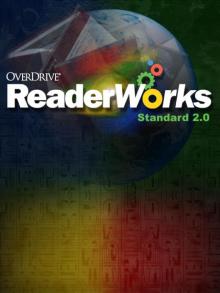 While We Wait by J. M. Snyder
While We Wait by J. M. Snyder Iron Tongue cr-4
Iron Tongue cr-4![Stieg Larsson [Millennium 02] The Girl Who Played with Fire v5.0 (LIT) Read online](http://i1.bookreadfree.com/i1/03/31/stieg_larsson_millennium_02_the_girl_who_played_with_fire_v5_0_lit_preview.jpg) Stieg Larsson [Millennium 02] The Girl Who Played with Fire v5.0 (LIT)
Stieg Larsson [Millennium 02] The Girl Who Played with Fire v5.0 (LIT) The Spinetinglers Anthology 2009
The Spinetinglers Anthology 2009 Bowles, Jan - Branded by the Texas Rancher (Siren Publishing Classic)
Bowles, Jan - Branded by the Texas Rancher (Siren Publishing Classic) Brown, Berengaria - Vivienne's Vacation (Siren Publishing Ménage and More)
Brown, Berengaria - Vivienne's Vacation (Siren Publishing Ménage and More) Inheritors
Inheritors Arthur Conan Doyle: A Life in Letters
Arthur Conan Doyle: A Life in Letters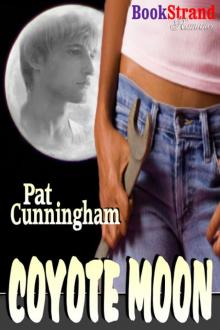 Cunningham, Pat - Coyote Moon (BookStrand Publishing Romance)
Cunningham, Pat - Coyote Moon (BookStrand Publishing Romance) Static Line
Static Line Ghost Mysteries & Sassy Witches (Cozy Mystery Multi-Novel Anthology)
Ghost Mysteries & Sassy Witches (Cozy Mystery Multi-Novel Anthology) Elizabeth Neff Walker - Puppy Love
Elizabeth Neff Walker - Puppy Love Ghosts in the Machine
Ghosts in the Machine Theater of the Crime (Alan Stewart and Vera Deward Murder Mysteries Book 6)
Theater of the Crime (Alan Stewart and Vera Deward Murder Mysteries Book 6) Red Satin Lips, Book One (The Surrender Series)
Red Satin Lips, Book One (The Surrender Series) Catherine Coulter - FBI 4 The Edge
Catherine Coulter - FBI 4 The Edge StateoftheUnion
StateoftheUnion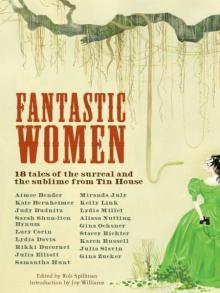 Fantastic Women: 18 Tales of the Surreal and the Sublime from Tin House
Fantastic Women: 18 Tales of the Surreal and the Sublime from Tin House Sara Wood-Expectant Mistress original
Sara Wood-Expectant Mistress original Nine-to-Five Fantasies: Tales of Sex on the Job
Nine-to-Five Fantasies: Tales of Sex on the Job Granta 133
Granta 133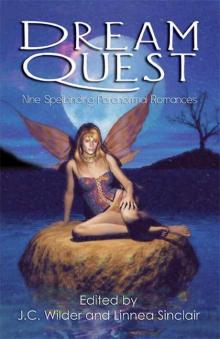 Dream Quest
Dream Quest The Warlock in Spite of Himself wisoh-2
The Warlock in Spite of Himself wisoh-2 Glenn, Stormy - Mating Heat (Siren Publishing Ménage Amour)
Glenn, Stormy - Mating Heat (Siren Publishing Ménage Amour) Davis, Lexie - Toys from Santa (Siren Publishing Classic)
Davis, Lexie - Toys from Santa (Siren Publishing Classic) Once Dead, Twice Shy
Once Dead, Twice Shy McSweeney's Enchanted Chamber of Astonishing Stories
McSweeney's Enchanted Chamber of Astonishing Stories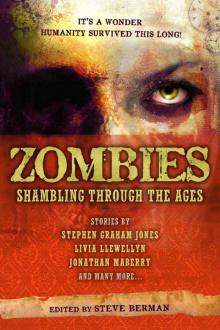 Zombies: Shambling Through the Ages
Zombies: Shambling Through the Ages Baghdad Without a Map
Baghdad Without a Map Banshee Cries (the walker papers)
Banshee Cries (the walker papers) Fire and Fog cr-5
Fire and Fog cr-5 The Twelve Hot Days of Christmas
The Twelve Hot Days of Christmas The Relations of Vapor: Dot - Connivance
The Relations of Vapor: Dot - Connivance![Harris, Daisy - Mere Temptation [Ocean Shifters 1] (Siren Publishing Classic) Read online](http://i1.bookreadfree.com/i2/04/11/harris_daisy_-_mere_temptation_ocean_shifters_1_siren_publishing_classic_preview.jpg) Harris, Daisy - Mere Temptation [Ocean Shifters 1] (Siren Publishing Classic)
Harris, Daisy - Mere Temptation [Ocean Shifters 1] (Siren Publishing Classic) World of Mazes cr-3
World of Mazes cr-3 Mistaken Identity (A Jules Poiret Mystery Book 26)
Mistaken Identity (A Jules Poiret Mystery Book 26) Star Trek - DS9 - Fall of Terok Nor
Star Trek - DS9 - Fall of Terok Nor Not Like I'm Jealous or Anything: The Jealousy Book (Ruby Oliver)
Not Like I'm Jealous or Anything: The Jealousy Book (Ruby Oliver) Skaterboy by J. M. Snyder
Skaterboy by J. M. Snyder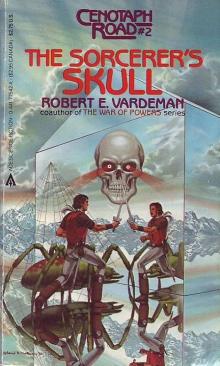 The Sorcerer_s Skull cr-2
The Sorcerer_s Skull cr-2 The Columbia Anthology of Modern Japanese Literature (Modern Asian Literature Series)
The Columbia Anthology of Modern Japanese Literature (Modern Asian Literature Series) New Erotica 5
New Erotica 5 Catherine Coulter - FBI 3 The Target
Catherine Coulter - FBI 3 The Target Best Sex Writing 2013: The State of Today's Sexual Culture
Best Sex Writing 2013: The State of Today's Sexual Culture Factoring Humanity
Factoring Humanity Huia Short Stories 11
Huia Short Stories 11 Call of the Wilds
Call of the Wilds Great English Short Stories (Dover Thrift Editions)
Great English Short Stories (Dover Thrift Editions)![Ramagos, Tonya - Logan's Lessons [Sunset Cowboys 2] (Siren Publishing Classic) Read online](http://i1.bookreadfree.com/i2/04/10/ramagos_tonya_-_logans_lessons_sunset_cowboys_2_siren_publishing_classic_preview.jpg) Ramagos, Tonya - Logan's Lessons [Sunset Cowboys 2] (Siren Publishing Classic)
Ramagos, Tonya - Logan's Lessons [Sunset Cowboys 2] (Siren Publishing Classic)![Morgan, Nicole - Sweet Redemption [Sweet Awakenings 1] (Siren Publishing Allure) Read online](http://i1.bookreadfree.com/i2/04/10/morgan_nicole_-_sweet_redemption_sweet_awakenings_1_siren_publishing_allure_preview.jpg) Morgan, Nicole - Sweet Redemption [Sweet Awakenings 1] (Siren Publishing Allure)
Morgan, Nicole - Sweet Redemption [Sweet Awakenings 1] (Siren Publishing Allure)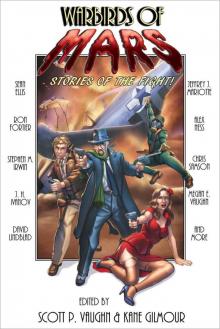 Warbirds of Mars: Stories of the Fight!
Warbirds of Mars: Stories of the Fight! Original Version of Edited Godwin Stories(lit)
Original Version of Edited Godwin Stories(lit) Where The Hell is Boulevard?
Where The Hell is Boulevard?![Chemical [se]X Read online](http://i1.bookreadfree.com/i2/04/13/chemical_sex_preview.jpg) Chemical [se]X
Chemical [se]X Allison Brennan - See No Evil
Allison Brennan - See No Evil Sherlock Holmes Mystery Magazine #1
Sherlock Holmes Mystery Magazine #1